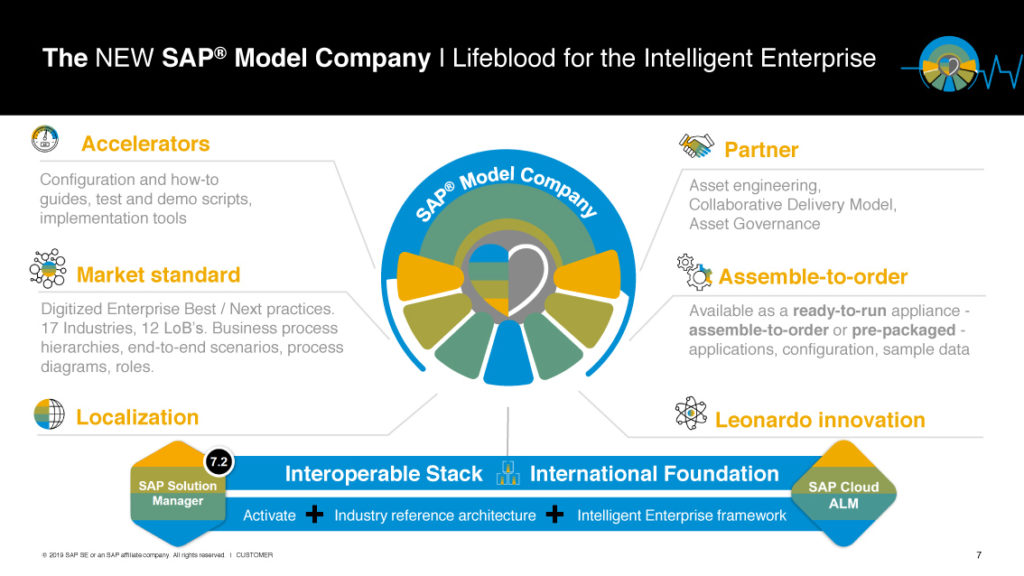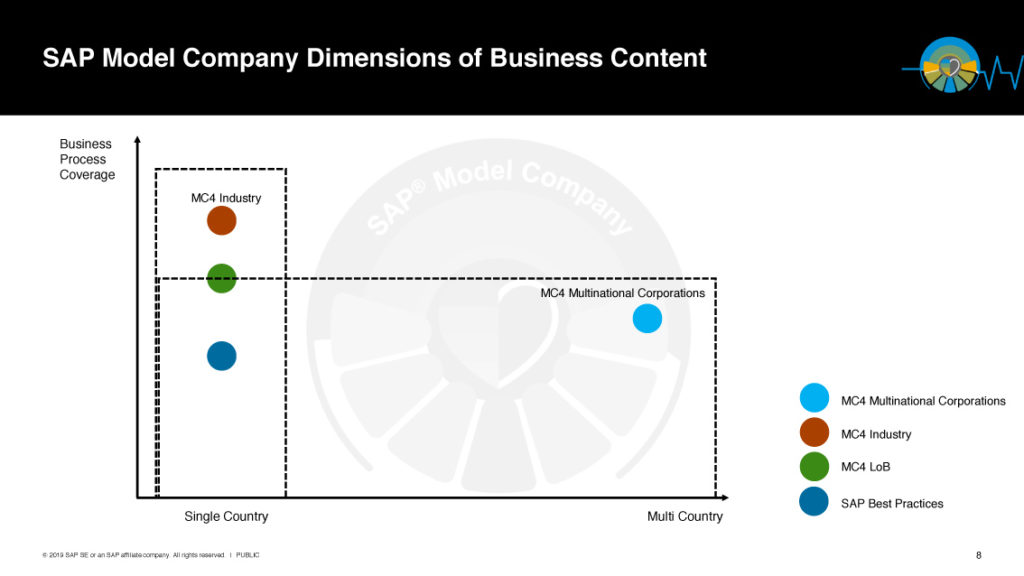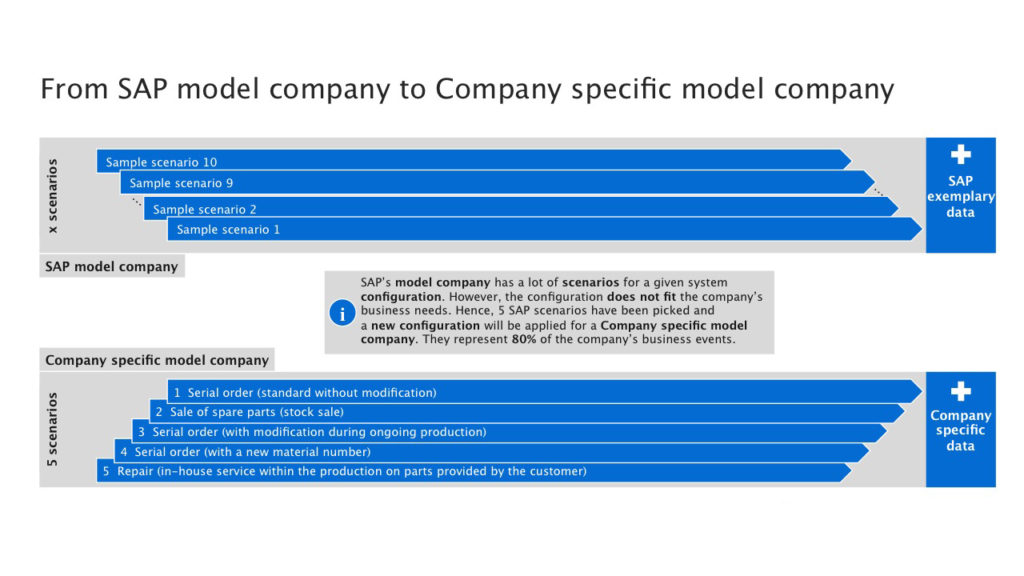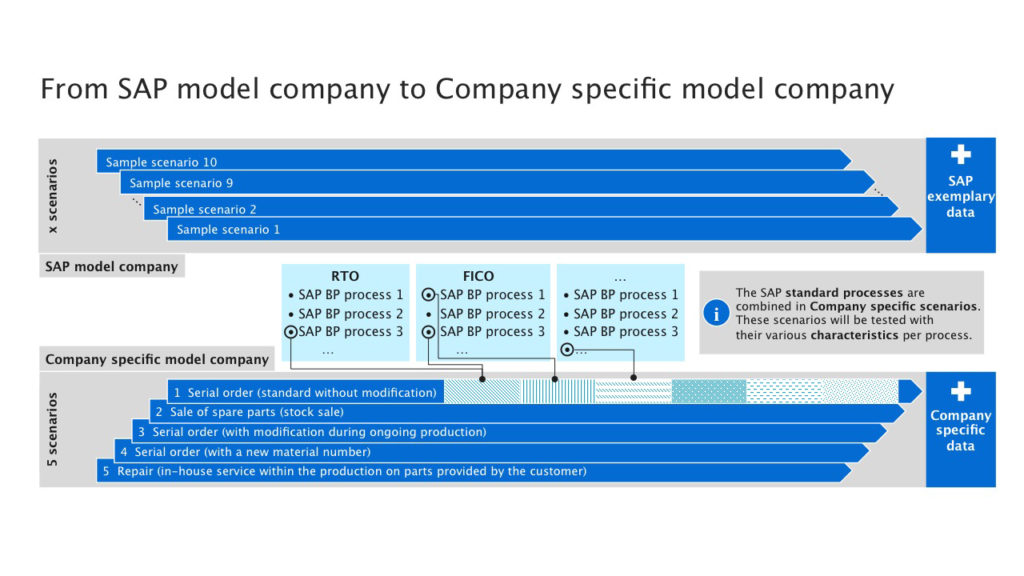Abstract: The blog post shows that building your own model company makes more sense for experienced SAP R/3 users than proceeding on the basis of an SAP model company, as this leads to an individual and more flexible solution that is better tailored to the needs of the company.
Since S/4HANA, SAP has offered so-called Model Companies, on the basis of which the SAP S/4HANA system can be introduced. The Model Company is comparable to a SAP IDES system available in SAP R/3, which no longer exists under S/4HANA.

Fig. 1: Overview SAP Model Company (Source: SAP SE)

Fig. 2: Model Company Content (Source: SAP SE)
There are also various model companies available, which are structured as follows and can be combined with each other:

Fig. 3: Dimensions of Business Content within a model company (Source: SAP SE)
This means that it is possible to configure a Model Company specifically in such a way that, on the one hand, the fundamentally important processes are available due to the regional distribution of its locations and, on the other hand, the industry-specific best processes are made available in this Model Company. However, our evaluation has shown that this is not as attractive as it appears at first glance:
- You have to purchase and pay for all the Model Companies you want in your specific solution individually.
- You have to pay the cost of merging the different Model Companies.
- The organizational units and master data used in the different Model Companies are not coordinated and harmonized, so that one finally has a system in which not really everything fits together.
However, these were only the initial points that made us wonder – in total, the estimated costs for providing the SAP Model Company with merge of the industry-specific MC we needed into our basic model (MC with companies in several countries) were approximately EUR 200,000. For this money, we would have been provided with an S/4HANA environment in which the processes relevant to us would for the most part have been directly executable, in order to show users how SAP sells the SAP standard processes. This approach may make sense for customers who have not yet used SAP.
However, we were in a company where SAP R/3 had been in use for 20 years, albeit with a high degree of modification – so our key users knew their way around. With the best will in the world, I couldn’t imagine how it would work that I would have to bring the SAP standard closer to such experienced key users if we had to bring it closer to them in a system based on master data and organizational units that have nothing whatsoever to do with their business, without completely embarrassing myself. The key users will not be modest about bicycle production if their actual business machines are built in ETO processes and serialization as well as batching is relevant for a large part of the materials.
On the other hand, I found the idea of this model company captivating, namely that there are continuous S/4HANA processes in the system, which were set up solely with the help of SAP Best Practice processes, which in the end we wanted to transfer our heavily modified SAP R/3 processes into the standard processes.
Building your own Model Company
After a short discussion we came to the conclusion that we would use the EUR 200,000 (or part of it) more sensibly if we built our own specific Model Company – based on the SAP S/4HANA best practice processes and with our real data examples. We then quickly identified the 5-6 end-to-end scenarios in our Business Process Master List that needed to be mapped throughout in order to have our own Model Company available.

Fig. 4: The SAP Model Company

Fig. 5: Our Company specific Model Company
In my next post, I’ll explain how to get your own model company in a structured way … and probably save the first 100,000 euros compared to the acquisition of SAP Model Companies.
